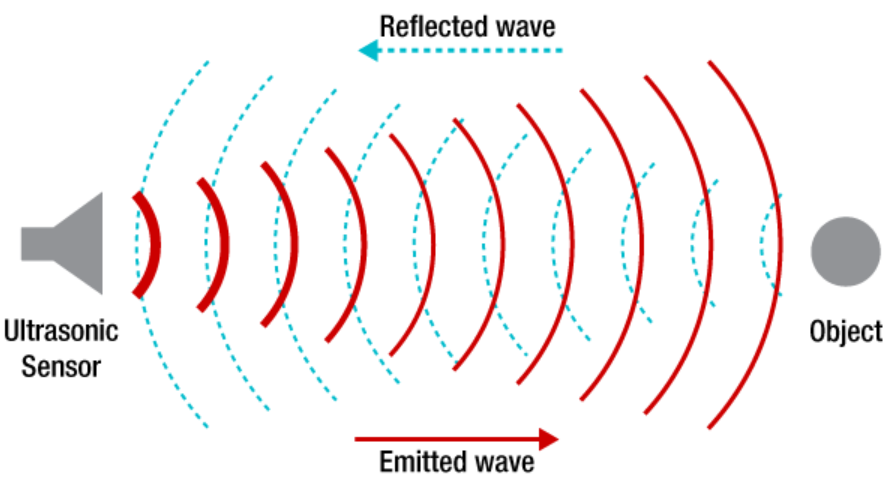SLAA907D September 2019 – December 2021 PGA450-Q1 , PGA460 , PGA460-Q1 , TDC1000 , TDC1000-Q1 , TDC1011 , TDC1011-Q1 , TUSS4440 , TUSS4470
1.1 Principles of Ultrasound
Ultrasonic sensors can measure distance and detect the presence of an object without making physical contact. They do so by producing and monitoring an ultrasonic echo. Depending on the sensor and object properties, the effective range in air is between a few centimeters up to several meters. The ultrasonic sensor (or transducer) generates and emits ultrasonic pulses that are reflected back towards the sensor by an object that is within the field of view of the sensor.
 Figure 1-1 Ultrasonic Time-of-Flight Measurement
Figure 1-1 Ultrasonic Time-of-Flight MeasurementThe ultrasonic sensor is a piezoelectric transducer, which is able to convert an electrical signal into mechanical vibrations, and mechanical vibrations into an electrical signal. Therefore, in a monostatic approach, the ultrasonic sensor is a transceiver which operates as both a speaker and microphone at a single frequency.
The sensor is able to capture the difference in time between the emitted and received echo. Because the speed of sound is a known variable, the captured round-trip time can be used to calculate the distance between the sensor and object. Equation 1 shows the Ultrasonic Distance Calculation.

This method of ultrasonic sensing is a time-of-flight measurement based on the propagation time of sound. Note that the velocity of sound through air varies by temperature. In dry air at 20°C (68°F), the speed of sound is 343 m/s, or a kilometer in 2.91 s. For more information on the relationship between the velocity of sound and temperature, see Section 3.4.